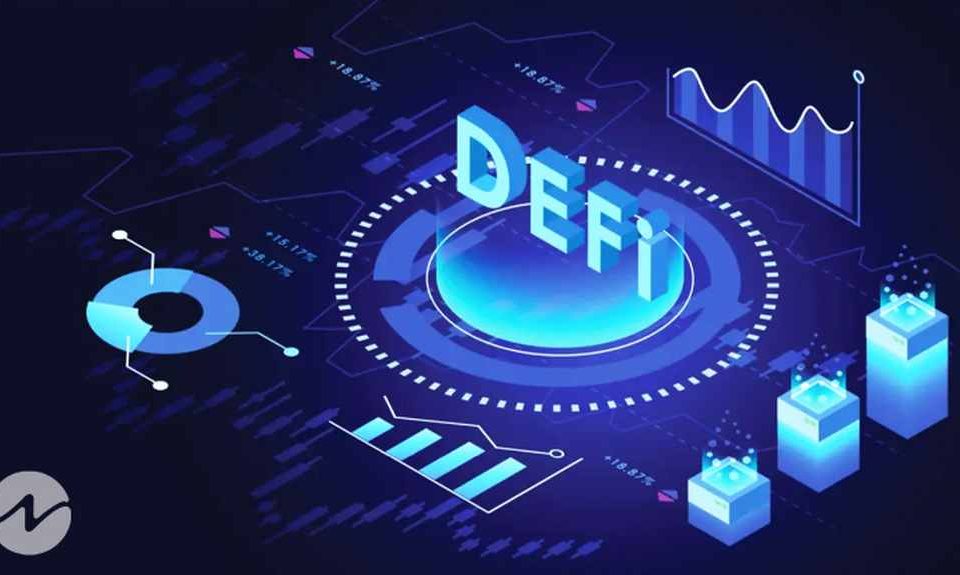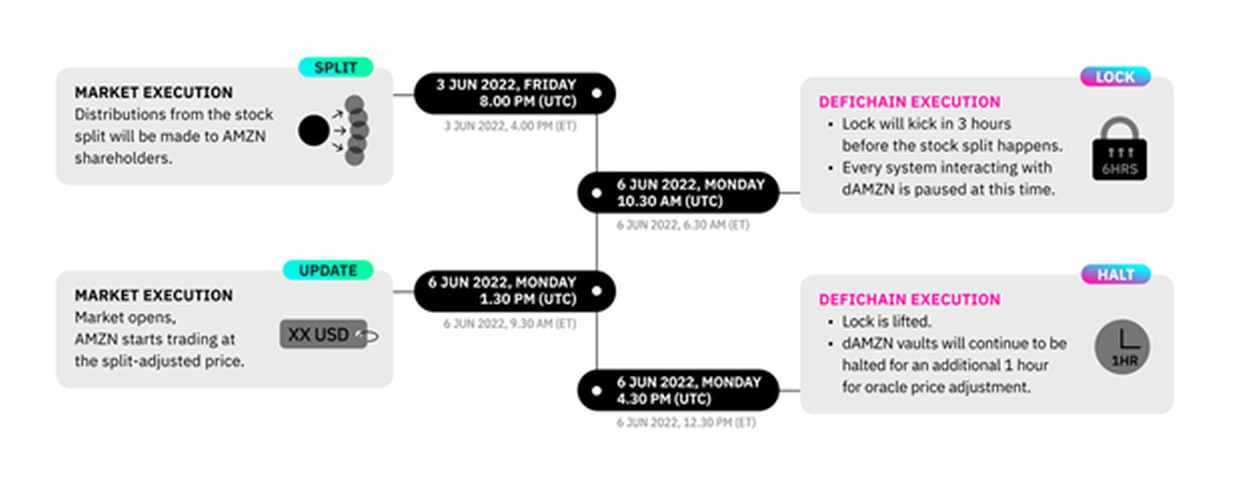Amazon’s 20-for-1 stock split bears this effect on DeFi tokens representing AMZN

There’s always a correlation between the stock market and cryptocurrency. For instance, as of May this year, the S&P 500 is down this year by 16%, and the tech-laden Nasdaq Composite is off by a bear-market 25%. During the same period, the world’s most popular cryptocurrency, bitcoin, also slid 33%. But the correlation is not always a bad thing.
Meanwhile, the correlation with the stock market is not just with digital currency but also with DeFi tokens. For example, in March, Amazon announced its first stock split since 1999 and the fourth since Amazon’s IPO in 1997. However, this new development from Amazon (NASDAQ:AMZN) has a direct impact on the DeFi tokens representing the AMZN shares in the crypto market.
The 20 for 1 stock split took effect on June 6th, splitting each existing share of AMZN into 20 individual units. At the current time, the shares trade at the price of $128. However, this split is not going to affect the business fundamentals but will only open more avenues for the ones looking to invest in the company. Before the split, Amazon shares were beyond the reach of most smaller investors.

While the stock split is a brilliant idea to onboard new investors, its effect on the DeFi tokens representing it is slightly different than one would expect.
There are various projects that offer decentralized tokens representing real-world stocks. For instance, DeFiChain lets users mint and trade dAMZN, which closely follows the Amazon stock in DeFi to give you price exposure (but not ownership). The dAMZN, like all dTokens on DeFiChain, mimics the prices of real-world stock by tracking and reflecting a number of variable factors and using oracles to capture those feeds.
The way this works is that anyone with a staked share of 50% DFI and 50% of any other assets’ combination can mint the assigned dToken. If investors don’t want to provide a mix of DFI and other assets, they can use DeFiChain’s decentralized stablecoin dUSD to mint a dToken. These dTokens aim to mimic the price action of the actual asset, providing an individual with the opportunity to invest and withdraw their favorite stock without the hassles of a traditional bank process.
dAMZN To Break Up As Well
The token will also be broken up into 20 tokens, just as the genuine Amazon stock will be. The owners of the dAMZN DeFi coin will receive 20 tokens for each and every dAMZN token that they hold, but their investment is not going to increase by 20 times.
As DeFiChain will update the dAMZN price from the oracles, investors will hold the same amount of investment as they had before the split took place.
The stock split itself was conducted in two stages. Following the cues of the stock market, DeFiChain locked all existing dAMZN tokens, and as the market reopened at the split-adjusted prices, DeFiChain began reflecting the price as well.

The reason why dAMZN and other DeFiChain tokens are noticing bullishness is that the process of traditional investment takes up too much of an individual’s time. DeFi tokens, on the other hand, require no such lengthy processing, making them much more efficient than TradeFi investment.
Furthermore, geographical restrictions and trading limits have made it difficult for millions of investors to invest in their favorite US stocks. DeFiChain, with its dTokens, is helping such traders and investors gain price exposure to these assets from anywhere in the world.
Apart from that, one can also buy a fractional piece of a token, for example – You could buy 1/10th of the dTSLA token, which in the spot market is almost impossible to find.
But as one knows, the limits of the imagination is the sky, and DeFiChain knows how to take it up a notch further.
Instead of having these dTokens sit idly in their wallet uselessly, DeFiChain allows the users to boost the yield with liquidity mining instead of only holding the stock to earn additional rewards.
In conclusion, none of the dAMZN token holders have or will be affected drastically going forward since Amazon’s 20 for 1 split itself has been executed smoothly.

